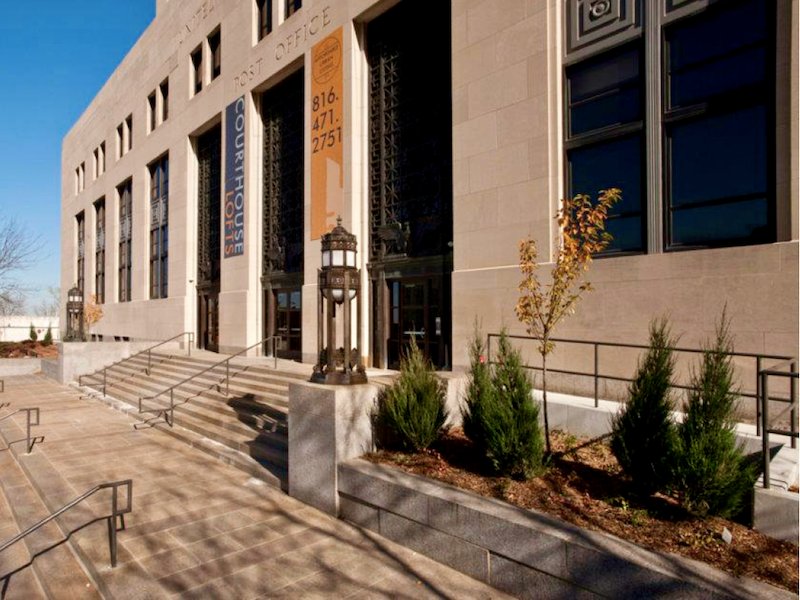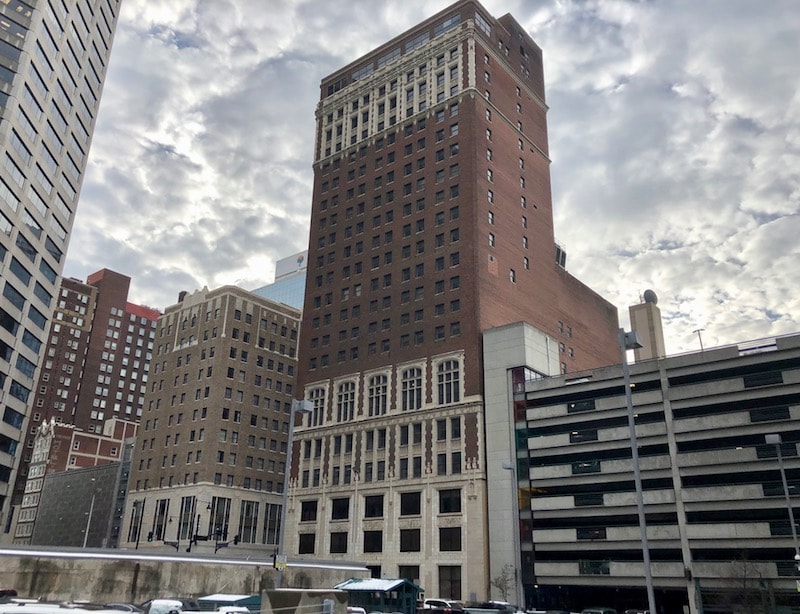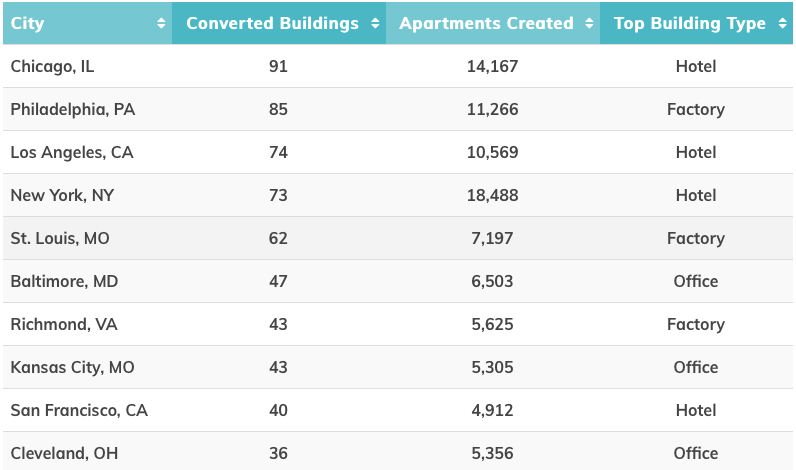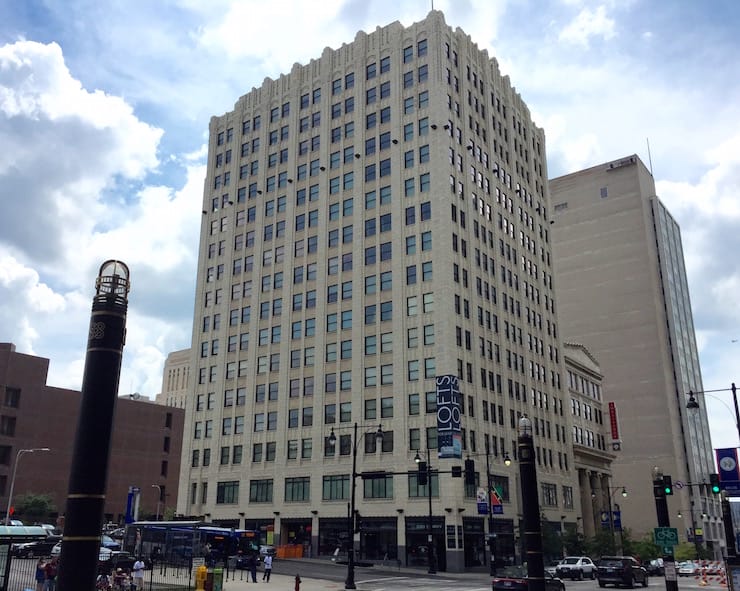KC a National Leader Converting Old Buildings to Apartments

Published October 7th, 2020 at 12:15 PM
By Kevin Collison
Kansas City ranks among the top 10 cities in the country when it comes to converting older buildings to apartments, the large majority of them downtown office towers, according to a new report by RENTCafé.
The report by the national real estate research firm found 43 buildings in Kanas City have been converted to 5,305 new residential units since the 1950s, most of those conversions occurring since 2000 including two dozen the last decade alone.
Since the current downtown renaissance began 20 years ago, older office buildings that had become obsolete have been the foundation for much of its residential growth. It has only been in recent years that new construction also has added to the residential supply.
The greater downtown population has increased from 21,700 people in 2000 to a projected 31,400 this year, according to a report by the Downtown Council.
The RENTCafé report ranked Kansas City ahead of cities including San Francisco, Cleveland, Minneapolis, Washington D.C. and Dallas when it came to overall conversions, and was second only to Baltimore nationally when it came to office conversions.
Ironically, the same reason that downtown office buildings saw their business tenants exit for suburban office parks the last 50 years made them appealing for residential renovation.

The 21-story former Traders National Bank Building was converted into a 201-unit project called The Grand.
“A lot of the older office buildings have smaller floor plates, 10,000- to 15,000 square feet,” said Jason Swords of Sunflower Development.
“In the office world, people wanted larger floor plates, but with smaller floors you can do a residential layout with most of the units having windows.”
Sunflower recently completed the renovation of the 21-story former Traders National Bank Building which opened in 1962 into a $65 million, 201-unit apartment project called The Grand.
It’s one of several large office building conversions including the 30-story Commerce Tower, which opened in 1965 and is now a 355-unit apartment building, and the historic, 36-story Power & Light Building, which opened in 1931 and is now 291 apartments.
One of downtown’s last remaining obsolete office towers, the 23-story Mark Twain Tower, is being converted by a Washington D.C. firm into 202 apartments at an estimated cost of $51.9 million.
Phil Aftuck of Bernstein said Kansas City’s success in attracting developers to reuse its old office buildings is largely due to Missouri’s historic tax credit program.
The state tax credit program coupled with a similar federal historic tax credit program helps developers raise cash to finance their projects.

The 23-story Mark Twain Tower opened in 1923 as the Kansas City Athletic Club.
“The state’s very pro-business historic tax credit program allows these former office buildings that have sat vacant to have new uses,” he said.
“All this office space doesn’t make sense anymore. You need more apartments as people move back into the cities.”
Aftuck said the financial help provided by historic tax credits has allowed Kansas City to save many of its architecturally significant buildings rather than demolish them.
“Having a historic tax credit program that recognizes the importance of a building and helps defray the costs of redeveloping it is vital,” he said.
The developer also said the improving downtown business climate is providing more jobs, making it a more attractive place to live. He cited the decision by the U.S. Department of Agriculture to locate two agencies here and Waddell & Reed relocating its headquarters.
“If they ever bring baseball downtown it would be great,” he said. “It’s a healthy town.”

RENTCafé ranked Kansas City eighth in the nation for converting older buildings into apartments. (Table by RENTCafê)
Aftuck also gave a shout out to City Councilwoman Katheryn Shields and Sean O’Byrne, a vice president at the Downtown Council, for their effort to encourage developers to explore opportunities in downtown.
“Other cities don’t have these kind of people,” he said.
In its report, RENTCafé also found that nationally, about 65 percent of the apartments created by renovations were affordable.
“Specifically, as many as 42 percent of conversions are oriented toward middle-income renters, while 23 percent are accessible to low-income residents,” the report found.
RENTCafé listed 10 projects around the country it described as its “favorite unusual building conversions.” Ranking 10th was the conversion of the historic U.S. Courthouse in downtown Kansas City into the 176-unit Courthouse Lofts project.
The Alexander Co. of Madison, Wisc. did the Courthouse Lofts project as well as the renovation of the historic 16-story Professional Building into 132 apartments.

The 132-unit Professional Building Lofts was redeveloped with the help of state affordable housing tax credits in 2006.
Both were affordable housing projects developed with the help of the state affordable housing tax credit program which was recently restored after being cut in 2017.
Matt Meier of Alexander Co. said the renovation of the old courthouse was a challenge even with the incentives, but the support of local elected officials, including former Mayor Kay Barnes, helped encourage his company to come to KC.
“When I first came to Kansas City in 2000, there was a lot of empty building stock, frankly,” he said. “There was potential there with all that beautiful, historic architecture.
“I met with Mayor Kay Barnes and she and her staff were excited about us coming to downtown.
“It takes a lot to get those things and we look for cities with good building stock and civic leaders who want to do something with them.”
With the supply of obsolete downtown office buildings drying up, Swords believes the next conversion frontier will be the West Bottoms. A Cleveland developer already has taken on some of its big old warehouses to create housing.
“Most of the big one in downtown have been swallowed up,” he said, “but there are a bunch of buildings in the West Bottoms that are great.”


